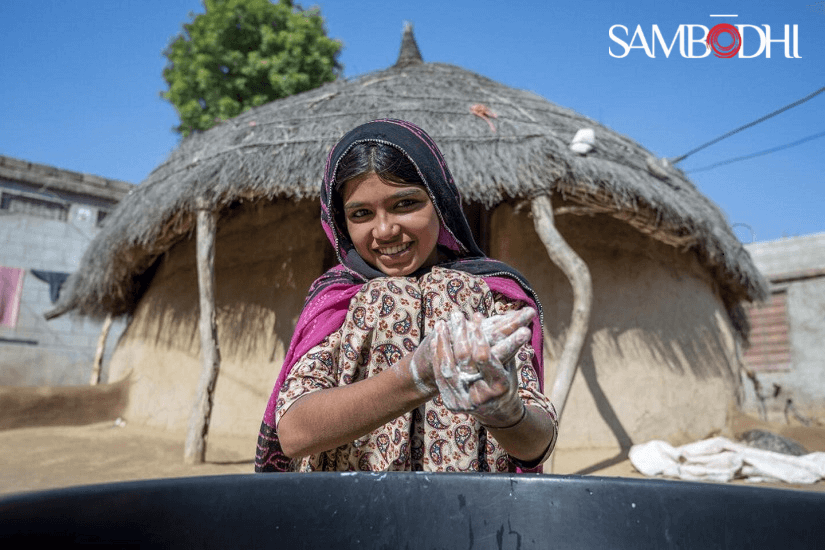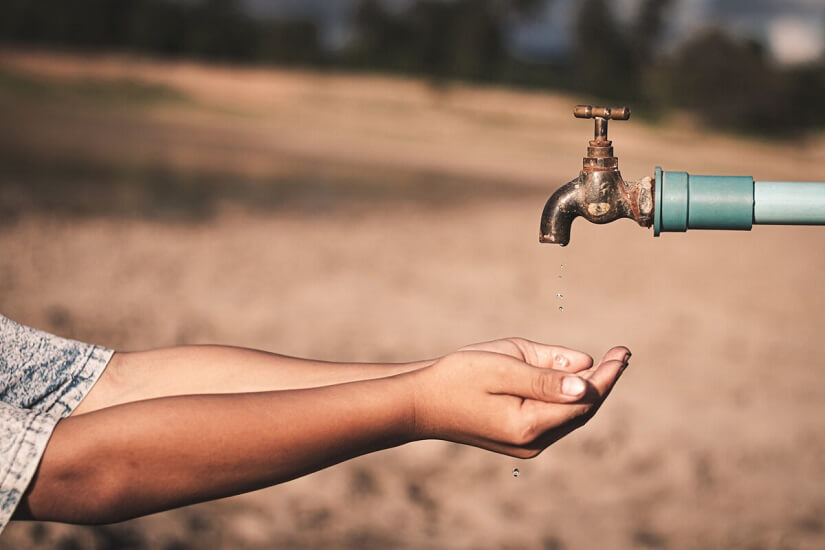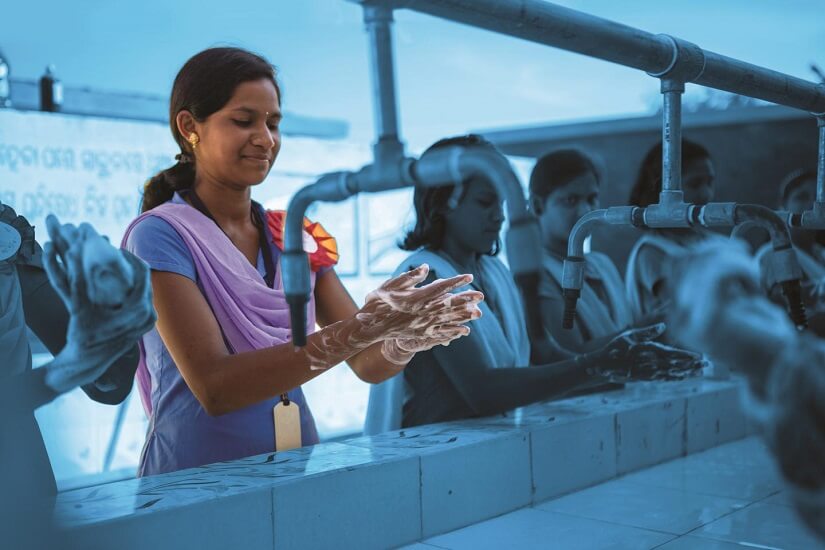Handwashing for a healthier India

Did you know that inculcating handwashing habits is the most inexpensive intervention in improving public health? It boils down to eliminating germs from hands which are the main pathways of germs transmission. The act of handwashing helps avoid spreading infections and maintains good hygiene. Regular and effective handwashing practices can:
- Reduce the risk of diarrhea by 30%
- Reduce acute respiratory infections by up to 20%
- Reduce the transmission of diseases such as cholera, Ebola, SARS, hepatitis E, and COVID-19
- Reduce the spread of antimicrobial resistance
- Reduce neglected tropical diseases
Healthcare-associated infections such as these are extremely costly to individuals, healthcare systems, and countries. In Europe, economic loss associated with such infections, which can be easily avoided by good hand hygiene, amounts to 7 billion Euros per year. In developing nations, annual net costs of diarrhea and pneumonia incur more than USD 12 billion per year. A 2017 study analyzed that a national handwashing program in India could yield a 92-fold return on investment (roughly USD 5.64 billion) while in China, a similar program could give a 35-fold return on investment (roughly UD 2.65 billion).
So, if the solution to prevent diseases is so straightforward and affordable, what seems to be the problem?
In 2020, only 71% of people had access to basic handwashing facilities globally, leaving 2.3 billion people without access to such services. The rate of change in service access has been slow: it increased by just 4% between 2015 and 2020. If this trend continues, the world will have only reached 78% coverage by 2030, which means that 1.9 billion people will not have access to handwashing facilities at home.

The problem of access extends to places like schools, healthcare facilities, and public areas. Only 71 countries have access to hygiene in healthcare facilities. Of the 107 countries with data available on handwashing services in schools, only 58% provided basic handwashing facilities, and 25% had no service.
Handwashing in India
Handwashing as a practice can feel essential to many, but the reality is that these behaviors vary depending on cultural and economic factors. For many, handwashing means cleaning one’s hands with soap and water, but there are people who do not have access to such facilities.
As per the latest National Family Health Survey (NFHS-5) report, some 16% of households used material other than soap and water, such as ash, mud, or sand, for washing. In fact, around 26% did not have any cleansing agent on their premises for safe handwashing. The report concludes that it stemmed from being unable to afford the products rather than a question of choice.
Data from National Sample Survey (NSS) 76th report, 2019, suggests that 26% of people in India don’t wash their hands with soap or detergent after defecation. To make matters worse, several parts of India face water scarcity, and as much as 70% of the surface water resources are contaminated, thereby worsening the recommended handwashing practices.
Such a dire situation demands immediate and sustained efforts in designing and implementing interventions on an institutional and community level.
What is the way forward?
While interventions such as the Swachh Bharat Mission (SBM) may have impacted the accessibility of toilets in remote areas, there is scope for improvement in maintaining hand hygiene. To tackle this issue with hands-on solutions, organizations have taken the following steps to create the desired impact:
- Mid-Meal Scheme provides for constructing handwashing stations in the dining area for children to learn and practice good hand hygiene.

- Dettol launched a program with Rais Khan, a popular folk music artist from Rajasthan, to spread the message about hygiene via folk songs, using entertainment to disseminate crucial information.
- UNICEF supported the installation of around 15,000 handwashing stations in rural communities and shelter camps. It also provided technical support to state-level stakeholders on producing hand sanitizers in multiple states and trained Self-Help Groups (SHGs) on local soap production.
Despite these initiatives, the Joint Monitoring Program (JMP) report by World Health Organization (WHO) and UNICEF has indicated that India has no available numbers on basic WASH services. Despite the boom that SBM created with its noticeable progress, the program still needs strengthening, which is possible only with an increased focus on monitoring and evaluation. For the nation to become truly ‘Swach’ and ‘Swasth’, we must converge resources and capacities, not just at the primary level of execution but also in the secondary, if not more crucial, stages of measuring impact and widening the scope to ensure longevity and sustainability.
Abhishek Sharma – Assistant Vice President, Sambodhi
Aishwarya Bhatia, Sambodhi
